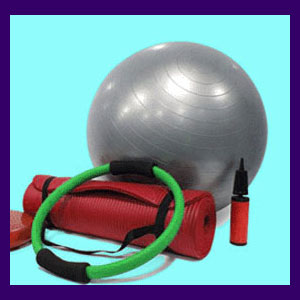
Physical therapy for back pain is a very common conservative treatment option for a variety of painful dorsalgia conditions. Physical therapy is used for many purposes including pain relief, muscular conditioning, post injury rehabilitation and back surgery recuperation. Physical therapy is an important facet of a recovery program for many patients and a qualified physical therapist can play an vital role in allowing a patient to move past their pain and lead a symptom-free life in the future. These are all positive factors associated with PT. However, all is not perfect when it comes to some patient experiences. Worse still, true recovery statistics for patients who utilize physical therapy as a sole method of treating back pain are abyssal.
This discussion concentrates on exposing the good and bad points of using physical therapy for back pain, particularly in chronic sufferers.
Physical Therapy for Back Pain Limitations
Many back pain sufferers are referred for PT over and over without seeing any benefits. In these cases, the motivation is obviously economic and perpetrated against the patient to milk them, or their insurance carrier, of money.
In other cases, PT can actually make matters worse, especially in cases where the true underlying source of symptoms is mistakenly diagnosed. A great number of patients have written to me citing these circumstances as ruining their personal experiences with physical therapy.
Physical Therapy for Back Pain Uses
There are so many reasons why a patient might be prescribed physical therapy. Patients with a chronic back pain condition are often given therapy as a method of increasing surrounding muscle strength and promoting improved circulation to the painful areas of the back. This is an excellent temporary treatment for oxygen deprivation back pain, but unfortunately only generates short term pain relief.
Many patients with a full range of diagnosed conditions find temporary relief from exercise therapy. This very fact supports the theory that many back pain conditions are actually ischemia syndromes. After all, exercises for back pain will not cure a physical spinal abnormality, such as a disc or bone problem.
Patients might be prescribed physical therapy in order to build up their muscles after long periods of inactivity, such as after a serious back injury. This is an important part of the recovery process both for the injured region, as well as the entire body. Patients might also undergo therapy after a surgical procedure. This will help the region to heal and assist the patient in regaining full usage of the affected area.
Physical therapy is a great treatment modality for many health concerns, but is truly best suited for rehabilitative and recuperative roles in the healthcare system.
Physical Therapy Treatment
Physical therapy consists of exercises and stretches to condition the muscles, improve cardiovascular capability and regain lost functionality. Exercises might involve calisthenics, resistance training, cardiovascular conditioning, specific fitness activities or the use of specialized rehabilitation equipment. Many therapists employ modalities such as yoga, Pilates or tai chi to help motivate patients to become more interested in their therapy.
There are so many possible approaches to a complete physical therapy program. It is important to find a therapist who can connect with the patient and provide them with a rich and rewarding treatment experience, as well as a positive physical result.
I personally believe one of the factors which makes PT so effective is simply the hands-on nature of personalized care afforded to patients. So few back pain sufferers can even get their primary care providers to give them the time of day, forget about providing them with an adequate physical examination. Meanwhile physical therapists and therapy assistants work directly with each client, providing a real human touch to their treatment. This can increase the effectiveness of care exponentially. Never discount the emotional side of therapy.
Physical Therapy for Psychological Back Pain
Physical therapy is often prescribed to patients with a misdiagnosed case of psychological back pain which has been mistakenly blamed on some coincidental scapegoat spinal abnormality. While this therapy will not hurt the patient and might even provide some minor symptomatic relief, it will not cure the underlying causative emotional issues.
Even the famous Dr. Sarno used to prescribe physical therapy to his tension myositis patients while working on a knowledge therapy based psychological cure with them. After some time, Dr. Sarno realized that even this innocent and positive physical treatment was contradictory to a real psychological therapy plan. The patient had to repudiate all ideologies that the pain was in any way a physical phenomenon and also had to relinquish all physical treatments in order to recover.
To this end, Dr. Sarno officially stopped using his extensive physical medicine background in the treatment of TMS patients and elected for a purely psychological approach. It is this pure knowledge therapy approach which has cured millions of their various torturous pain conditions.
Physical Therapy for Back Pain Opinions
I am a big fan and avid supporter of physical therapists. I truly believe they are one of the most important and open minded groups of healthcare practitioners today. However, I still caution patients not to place all their eggs in one basket.
Physical therapy is an important part of a combined care regimen for physical back pain and rehabilitation. It is not a valuable part of a pain relief program for any psychosomatic syndrome and might actually serve to perpetuate the condition. Be careful when the actual cause of symptoms is under debate. To all of you in the field of physical therapy for back pain relief, I salute you. You provide an excellent service which is truly needed and appreciated by your patients.
Back Pain > Treating Back Pain > Physical Therapy for Back Pain





